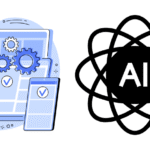 Native App Development vs Cross-Platform: a critical comparison highlighting native apps’ optimized performance for specific platforms versus cross-platform’s broader reach and cost-effectiveness.
Native App Development vs Cross-Platform: a critical comparison highlighting native apps’ optimized performance for specific platforms versus cross-platform’s broader reach and cost-effectiveness.
When it comes to developing a mobile app, one of the major decisions you will make is whether to go native or cross platform. Native app development involves creating apps for a specific platform, such as iOS or Android, using the platform’s native programming language and tools.
Cross platform app development, on the other hand, involves building apps that can run on multiple platforms using a single codebase and language.
Key Takeaways
- Native app development involves creating apps for a specific platform using the platform’s native programming language and tools.
- Cross platform app development involves building apps that can run on multiple platforms using a single codebase and language.
- The choice between native and cross platform app development depends on various factors such as development efficiency, performance, user interface design, access to device features, development tools and frameworks, platform-specific considerations, maintenance and updates, market reach and distribution, and cost considerations.
Comparison of App Development Approaches
When it comes to app development, there are two main approaches: Native and Cross Platform. Both offer unique advantages and disadvantages, which are important to consider when choosing the right approach for your project. In this section, we will compare and contrast these two approaches to help you make an informed decision.
Native App Development
Native app development involves creating an app specifically for a single platform, using language and tools that are specific to that platform. For example, if you want to develop an iOS app, you would typically use Swift or Objective-C programming languages and Xcode development environment.
| Advantages | Disadvantages |
|---|---|
|
|
Cross Platform App Development
Cross Platform app development involves creating an app that can be deployed on multiple platforms using a single code base and development environment. This is typically achieved through the use of frameworks such as React Native, Flutter, or Xamarin.
| Advantages | Disadvantages |
|---|---|
|
|
Ultimately, the decision to use native or cross-platform development depends on a range of factors, including the project requirements, budget, timeline, and target audience. In the following sections, we will explore these factors in detail to help you make an informed decision.
Efficiency of Native and Cross Platform App Development
One of the key factors to consider when choosing between native and cross platform app development is efficiency. Efficiency refers to the ability to develop apps in a timely and cost-effective manner, while making the most of available resources.
Native app development typically requires a longer development time and higher cost compared to cross platform app development. This is because native apps are built specifically for a single platform, such as iOS or Android. Developers must code the app from scratch for each platform, which requires a significant amount of time and effort. On the other hand, cross platform app development involves creating a single codebase that can be used across multiple platforms, resulting in faster and more cost-effective development.
However, it is important to note that cross platform app development may not always be the most efficient option. While it may result in shorter development times, cross platform apps may suffer from performance issues or limitations in terms of access to device features. In some cases, native app development may be the more efficient option if a high level of performance and customization is required.
In terms of resource utilization, cross platform app development is generally more efficient as it allows developers to leverage a single codebase across multiple platforms. This means that less time, effort, and resources are required for development and maintenance, resulting in cost savings for businesses and organizations.
Ultimately, when it comes to efficiency in app development, it is important to consider the specific requirements of the project and weigh the pros and cons of native and cross platform development. By carefully considering these factors, developers can choose the most efficient approach for their project, resulting in a successful and cost-effective app.
Performance of Native and Cross Platform Apps
Performance is a crucial aspect to consider when choosing between native and cross platform app development. While both approaches can deliver high-performing apps, there are some differences to consider.
Speed: Native apps are generally faster than cross platform apps because they are optimized for a specific platform. Cross platform apps need to run on multiple platforms, so they may not be able to take full advantage of the features and capabilities of each platform. As a result, cross platform apps may have slower loading times or experience performance lags.
Responsiveness: Native apps also tend to be more responsive than cross platform apps. This is because they have direct access to the device’s hardware and can take advantage of platform-specific features. Cross platform apps, on the other hand, have an additional layer of abstraction between the app and the hardware, which can cause delays or glitches.
User Experience: The user experience is essential to the success of any app, and performance is a critical factor in delivering an excellent user experience. Native apps can provide a seamless and intuitive experience, which can be more challenging to achieve with cross platform apps. This is because cross platform apps need to maintain consistency across multiple platforms, which can limit their customization capabilities.
Overall, while both native and cross platform apps can deliver high performance, native apps tend to have the edge due to their optimization for specific platforms and direct access to device hardware. However, cross platform apps can still provide a smooth user experience while delivering on broader market reach and cost advantages.
User Interface/Design
One of the key differences between native and cross platform app development is the level of customization and consistency that can be achieved in user interface design. Native apps are built specifically for a single platform, allowing developers to fully utilize the interface design guidelines and tools provided by the platform. This results in a high level of user experience and interface consistency, which can be challenging to achieve with cross platform apps.
Cross platform frameworks such as React Native and Xamarin have made significant strides in improving the user interface capabilities of cross platform apps. These frameworks provide developers with access to a wide range of pre-built components and templates that can be used to create custom UI designs. However, the level of customization available is still limited compared to native development.
Another advantage of native development is the ability to take advantage of platform-specific design trends and features. For example, iOS apps can incorporate Apple’s unique design language, while Android apps can utilize Material Design.
Overall, while cross platform development has come a long way in terms of UI design, native development still provides a higher degree of customization and consistency in user interface design.
Access to Device Features
One of the key considerations when choosing between native and cross platform app development is the level of access to device-specific features. While native apps have the advantage of being able to fully utilize the features of the operating system and device hardware, cross platform apps may face limitations in this area.
Native apps can easily access device features such as the camera, GPS, accelerometer, and other sensors, allowing for a more seamless and integrated user experience. On the other hand, cross platform apps may require additional development work to access these features, and may not be able to utilize them to the same extent as native apps.
However, it is worth noting that some cross platform development frameworks, such as React Native and Xamarin, offer plugins and libraries that enable access to device features, providing a level of parity with native app development in this area. Additionally, cross platform apps have the advantage of being able to utilize web APIs and plugins to create new features that may not be available on native platforms.
Development Tools and Frameworks

When it comes to app development, the choice of development tools and frameworks is crucial in determining project success. Native app development typically requires developers to use a specific programming language and integrated development environment (IDE) based on the platform, such as Swift for iOS and Java for Android. On the other hand, cross-platform app development offers a wider range of development tools and frameworks that can be used across multiple platforms.
One popular development tool for native app development is Xcode, which is an IDE used for developing iOS, macOS, watchOS, and tvOS apps. Xcode provides developers with a wide range of tools and features such as interface builder, asset catalogs, and performance analysis. For Android development, Android Studio is an IDE that offers similar features and functionality.
Cross-platform app development tools and frameworks also offer advantages in terms of development efficiency and cost-effectiveness. Some popular cross-platform development tools include React Native, Xamarin, and Flutter. React Native is a JavaScript library created by Facebook that allows developers to build native-like apps for both iOS and Android using a single codebase. Xamarin, on the other hand, uses C# programming language and .NET framework to build cross-platform apps, while Flutter uses the Dart programming language and offers a rich set of pre-built widgets and tools.
When it comes to choosing the right development tool or framework, developers need to consider several factors such as project requirements, team experience, and development time. Native app development may offer better performance and access to device features, but can be more time-consuming and costly. Cross-platform app development can be more efficient and cost-effective, but may sacrifice some performance and platform-specific capabilities. Ultimately, the choice of development tool and framework should align with the project goals and priorities.
Platform-specific Considerations
One of the crucial aspects to consider when choosing an app development approach is the platform-specific considerations for each option. Native app development allows the creation of apps that are tailored to a specific platform (e.g., iOS or Android), which ensures that the app is optimized for that platform’s hardware, software, and user interface. On the other hand, cross platform app development allows the creation of apps that can work seamlessly across multiple platforms, without requiring significant modifications or adjustments.
When developing native apps, developers need to consider the hardware and software specifications of each platform. This includes the processing power, screen size, and resolution, as well as the version of the operating system that the app will be running on. Developers also need to consider the specific user interface guidelines and design principles for each platform to ensure that the app is consistent with other apps on the same platform and follows industry standards.
For cross platform app development, developers need to consider the compatibility of the app across multiple platforms. This includes ensuring that the app can work seamlessly across different screen sizes, resolutions, and processing power. Developers also need to consider the specific design guidelines and principles for each platform to ensure that the app looks and feels consistent across all platforms and meets user expectations.
In addition, developers need to consider the availability and accessibility of device-specific features, such as camera, GPS, and sensors. Native app development allows for full access to these features, which can provide a better user experience and more comprehensive functionality. Cross platform app development, however, may have limitations in accessing and utilizing these features, which can impact the overall performance and usability of the app.
Ultimately, when choosing between native and cross platform app development, it is crucial to consider the specific platform-related factors and the overall project requirements to make an informed decision that best fits the target audience and business goals.
Maintenance and Updates

After launching an app, maintaining and updating it is crucial for its success and longevity. However, the process of maintaining and updating native and cross platform apps differs. In this section, we will explore the maintenance and update process for both approaches and compare their efficiency.
Maintenance
Native apps are developed for a specific platform and require separate maintenance for each platform. This means that developers must dedicate resources to maintaining and updating the app for each platform, which can be time-consuming and costly. Additionally, different versions of the app may need to be created to be compatible with each platform’s newest software updates, further adding to the maintenance workload.
On the other hand, cross platform apps are typically developed using a single codebase, meaning that maintenance only needs to be performed once for all platforms. This can save time and resources, as developers do not need to allocate resources for each platform separately.
Updates
Updating a native app can be a complex process, as developers must ensure that each platform-specific version of the app is updated and compatible with the latest software updates. This can lead to delays in releasing updates, causing frustration for users who may be waiting for new features or bug fixes.
Cross platform apps, on the other hand, can be updated simultaneously across all platforms, as they use a single codebase. This means that updates can be pushed out more efficiently, ensuring all users have access to the latest version of the app at the same time.
Efficiency
Overall, cross platform app development can be more efficient for maintenance and updates, as developers can work on a single codebase and push updates out to all platforms at once. However, this efficiency depends on the complexity of the app and the number of platforms it is available on. Native app development may be more appropriate for certain types of apps, such as those that require access to specific platform features, or those that need to perform complex tasks.
Ultimately, the maintenance and update process for native and cross platform apps can vary greatly depending on the individual project and its requirements. Developers must carefully consider these factors before choosing an app development approach.
Market Reach and Distribution
When it comes to market reach and distribution, cross platform apps have a clear advantage over native apps. Cross platform apps can be developed once and deployed to multiple platforms, including Android, iOS, and web, reaching a wider audience. This can be particularly beneficial for businesses targeting global markets, as cross platform apps can be easily translated and adapted to different regions.
Native apps, on the other hand, are built specifically for a single platform, limiting their reach to users of that particular platform. For example, an iOS-only app will not be accessible to Android users, and vice versa. To target both platforms, businesses would need to develop separate native apps, increasing their development and maintenance costs.
App Store Restrictions
Another factor to consider in market reach is app store restrictions. Both Apple App Store and Google Play Store have strict guidelines and restrictions on the types of apps that are allowed to be published. Native apps that violate these guidelines may be rejected and taken down from the app stores, limiting their reach to users who have already downloaded the app.
Cross platform apps are less likely to face these restrictions, as they are developed using frameworks and tools that are approved by the app stores. This means that they have a higher chance of getting published and reaching a wider audience.
User Base and Global Accessibility
Native apps have the advantage of being optimized for the particular platform they are built for, providing a seamless user experience and better performance. This can be particularly beneficial for businesses targeting a specific user base, such as iOS users in the US.
However, cross platform apps have the potential to reach a global audience, as they are not restricted by platform-specific limitations. This can be advantageous for businesses looking to expand their reach beyond their local market.
Although native apps have the advantage of being optimized for a specific platform, cross platform apps have a greater market reach and accessibility, making them a better option for businesses looking to target a wider audience across multiple platforms.
Cost Considerations

Cost plays a vital role in app development projects, and choosing between native and cross-platform development greatly affects the budget.
Native app development typically demands more resources and time. This is because developers have to write separate codes for each platform. In contrast, cross-platform app development uses a single codebase, potentially reducing both development and maintenance costs.
However, the long-term costs of each approach are crucial to consider. Cross-platform development might seem cost-effective initially but can incur higher expenses over time.
The complexity and time required to maintain and update a cross-platform app often lead to increased maintenance costs. On the other hand, native app development, while more resource-intensive upfront, tends to be easier to maintain and update in the long run.
Revenue generation opportunities should also be considered when choosing between native and cross-platform app development. A well-crafted native app typically offers a more seamless user experience, potentially boosting user engagement and revenue.
Cross-platform apps, while capable of success, may face limitations in user experience due to compatibility issues or inconsistent design. Evaluating the potential return on investment for each approach is key in understanding the cost implications of app development.
Examples: Native vs Cross Platform Apps
Real-world examples shed light on the strengths and weaknesses of native and cross-platform app development. Here are key case studies:
Native App: Instagram
Instagram, a widely-used social media platform, exemplifies a successful native app. It’s available for iOS and Android and was developed natively to optimize user experience. Native development let Instagram leverage device-specific features for quick performance, high-quality images, and smooth integration with camera and editing tools.
However, native apps require more resources for development and maintenance, potentially limiting market reach to users of specific devices or operating systems.
Cross-Platform App: Airbnb
Airbnb, the well-known home-sharing app, is a successful cross-platform example. Available for iOS, Android, and the web, Airbnb used a cross-platform approach to reach a broader audience and reduce development costs.
Cross-platform apps can face challenges in accessing device-specific features and maintaining peak performance. Airbnb addressed this by blending native and cross-platform development, achieving a seamless user experience across all platforms.
Native vs Cross-Platform: The Verdict
These cases show there’s no universal solution in app development. Native apps excel in performance and device-specific feature utilization. Cross-platform apps are advantageous for broader market reach and cost-effectiveness.
The ideal approach depends on project requirements, budget, timeline, and target audience. Consider these factors and seek advice from experienced developers to determine the best strategy for your project.
Choosing the Right Approach
Wrapping up

Native and cross-platform app development each come with their own benefits and drawbacks. Native apps often have superior performance and more customization options for user interfaces. However, cross-platform apps are more efficient in terms of time and cost, using a single code base for multiple platforms.
Efficiency in App Development
Efficiency impacts development time, cost, and resource use in app projects. Native and cross-platform methods each offer unique efficiencies. The best choice depends on the project’s specific needs.
Performance Considerations
Performance is crucial as apps that lag or crash can frustrate users and attract poor reviews. Native apps typically provide better performance, but cross-platform apps have significantly improved, offering similar user experiences.
User Interface and Design
The user interface and design are vital for engaging apps. Native apps allow more flexibility and customization for each platform. Cross-platform apps offer consistent design across platforms, which can save design time and effort.
Access to Device-Specific Features
Accessing device-specific features can affect an app’s usefulness and functionality. Native apps excel here, fully utilizing each device’s features. Cross-platform apps may face limitations, but plugins and APIs can address some of these challenges.
Development Tools and Frameworks
Choosing the right tools and frameworks is crucial. Each approach, native or cross-platform, has distinct tools and frameworks. The decision depends on the strengths and limitations of each.
Platform-Specific Considerations
Each platform has unique user expectations and compatibility issues. These considerations are key in deciding between native and cross-platform development, as well as in planning updates and maintenance.
Cost Implications
Cost is a critical factor in app development. Cross-platform development might save on time and costs with one code base for multiple platforms. Native development might offer a better investment return through enhanced performance and user engagement.
Choosing between native and cross-platform app development hinges on the project’s specific needs and constraints. Developers must balance the advantages and disadvantages of each approach, considering development time, cost, performance, user interface, and access to device-specific features.
Consider hiring cross platform developers from South America
One area where cross platform development can save costs is in hiring developers from South America. This region has a wealth of skilled developers who can offer cost-effective solutions for app development projects. By choosing to work with South American developers, companies can save on development costs while still receiving quality work.
The native vs cross platform app development debate is not a clear-cut choice. Developers must carefully consider each approach based on the specific requirements and constraints of the project.
External Resources
https://www.teamwork.com/blog/resource-utilization/
https://kotlinlang.org/docs/cross-platform-frameworks.html
https://www.techtarget.com/searchsoftwarequality/definition/native-application-native-app
FAQ

Q: What is the difference between native app development and cross-platform app development?
A: Native app development refers to building apps specifically for a particular operating system, such as iOS or Android, using platform-specific programming languages. Cross-platform app development, on the other hand, involves building apps that can run on multiple platforms using a single codebase.
Q: What are the advantages of native app development?
A: Native app development allows for deep integration with the operating system, resulting in better performance, access to device features, and a more customized user experience.
Q: What are the advantages of cross-platform app development?
A: Cross-platform app development offers faster development time, cost savings, and the ability to reach a larger audience by targeting multiple platforms simultaneously.
Q: Which approach is more efficient, native or cross-platform app development?
A: The efficiency of app development depends on various factors, including the specific project requirements, timeline, and budget. Native app development may be more efficient for achieving optimal performance and utilizing device features, while cross-platform app development can be more efficient in terms of development time and cost savings.
Q: How does the performance differ between native and cross-platform apps?
A: Native apps often provide better performance in terms of speed, responsiveness, and overall user experience, as they are specifically optimized for the native operating system. Cross-platform apps may have some performance trade-offs due to the need for compatibility across different platforms.
Q: Can cross-platform apps have the same level of user interface customization as native apps?
A: Cross-platform app development frameworks have improved over time, allowing for more customization and consistent user interface design across different platforms. However, native apps still offer more flexibility in terms of design customization.
Q: Can cross-platform apps access device-specific features?
A: Cross-platform apps can access certain device-specific features through the use of plugins and APIs. However, native apps have more direct and seamless access to device-specific features, resulting in better integration and utilization.
Q: What are some popular development tools and frameworks for native app development?
A: Popular development tools and frameworks for native app development include Xcode and Swift for iOS, and Android Studio and Java/Kotlin for Android.
Q: What are some popular development tools and frameworks for cross-platform app development?
A: Popular development tools and frameworks for cross-platform app development include React Native, Flutter, and Xamarin.
Q: What are some platform-specific considerations when choosing between native and cross-platform app development?
A: Platform-specific considerations include compatibility with different operating systems and versions, the frequency of updates and changes to the platform, and user expectations for a consistent experience on their preferred platform.
Q: How is maintenance and updates handled for native and cross-platform apps?
A: Maintenance and updates for native apps may require separate development and testing for each platform, while cross-platform apps can be updated more efficiently with a single codebase. Bug fixing and adding new features may also vary in complexity between the two approaches.
Q: Which app development approach has a wider market reach?
A: Both native and cross-platform apps have the potential for wide market reach, but the specific reach may vary depending on factors such as app store restrictions, user base, and global accessibility.
Q: What are some cost considerations in app development?
A: Cost considerations include development expenses, maintenance costs, and the potential revenue generation of the app. Native app development may have higher initial costs, while cross-platform app development can offer cost savings through code reuse.
Q: Can you provide some case studies of successful native and cross-platform apps?
A: Case studies of successful native and cross-platform apps can showcase their strengths and weaknesses, providing real-world examples of how these approaches have been implemented effectively.
Q: What factors should be considered when choosing the right app development approach?
A: When choosing an app development approach, factors such as specific project requirements, budget, timeline, target audience, and desired platform capabilities should be taken into consideration.
Q: What are the benefits of hiring cross-platform app developers from South America?
A: Hiring cross-platform app developers from South America offers the advantages of their expertise and cost-effectiveness, making it a favorable option for businesses looking for skilled developers at competitive rates.
Charlotte Williams is a talented technical author specializing in cross-platform app development. With a diverse professional background, she has gained valuable experience at renowned companies such as Alibaba and Accenture. Charlotte’s journey in the tech industry began as a mobile UX designer back in 2007, allowing her to develop a keen understanding of user-centric app design.
Proficient in utilizing frameworks like React Native and Flutter, Charlotte excels in building cross-platform mobile apps and imparting her knowledge to aspiring developers. She pursued a degree in Computer Science at Cornell University, equipping her with a strong foundation in the field. Residing in San Francisco with her three beloved dogs, she finds solace in hiking the hills and connecting with nature. Charlotte’s passion for app development, combined with her dedication to sharing expertise, makes her an invaluable resource in the world of cross-platform app development.







